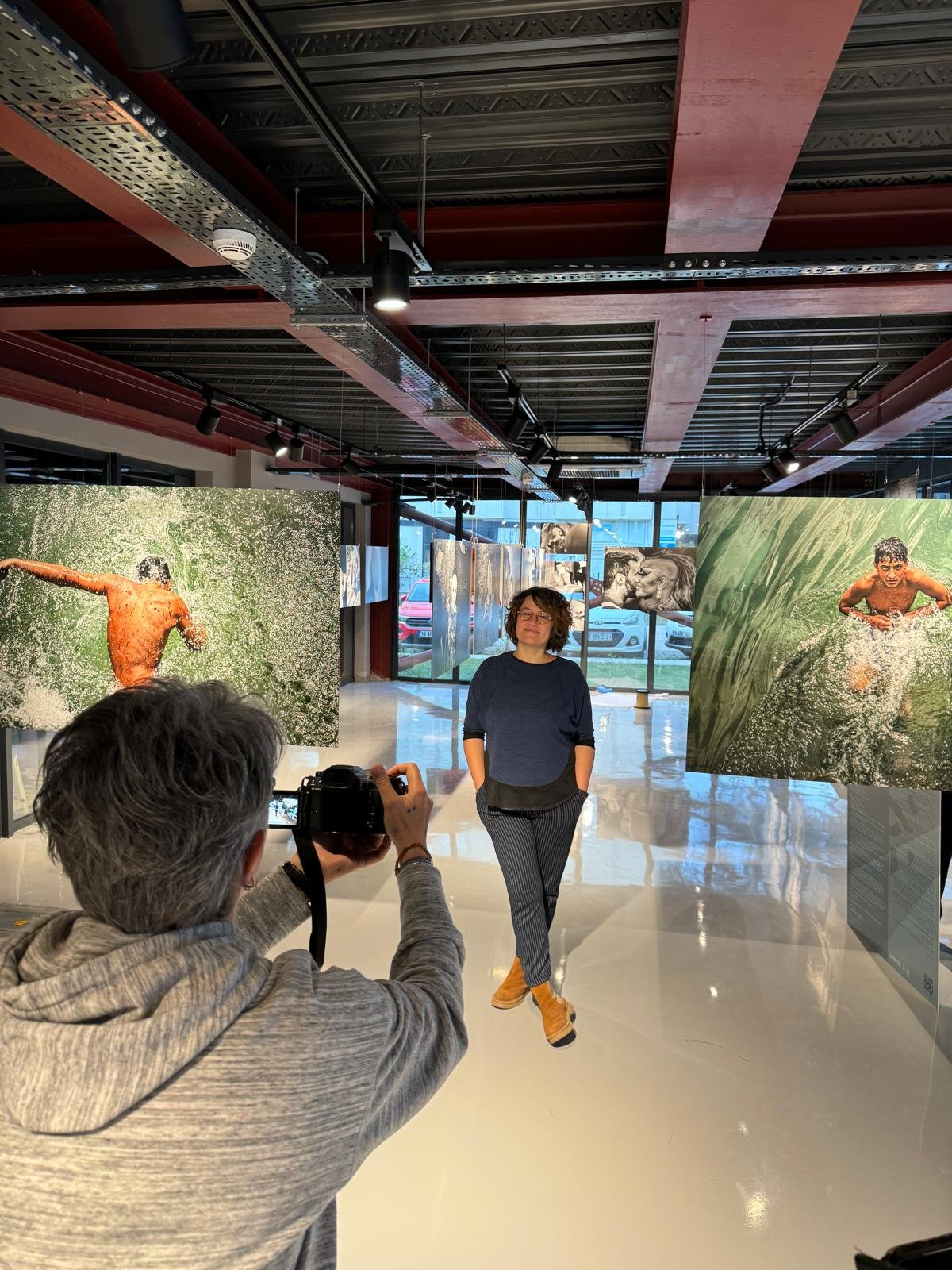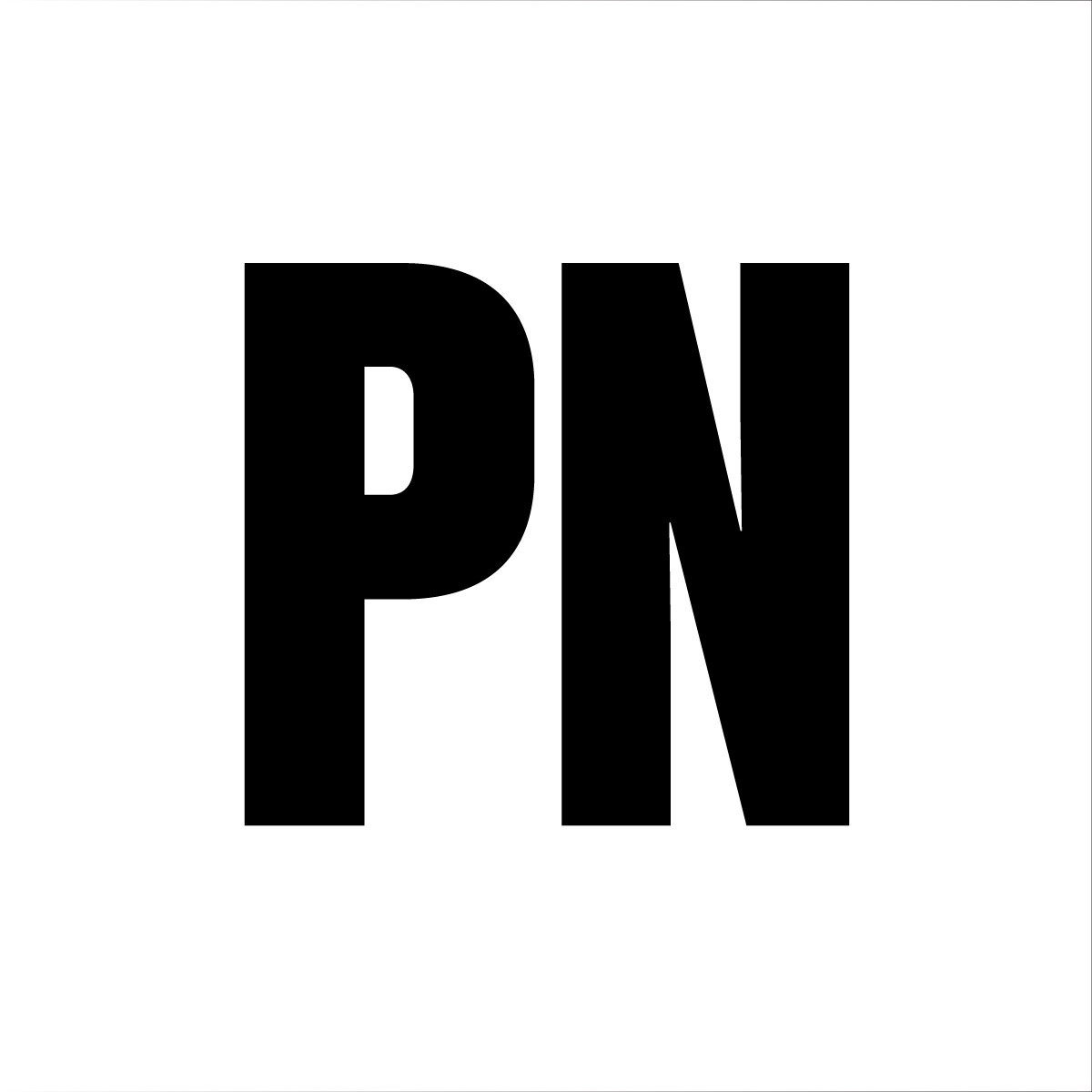
Shadow Archive
Meggan Gould is a contemporary photographer whose work often explores the rhetorical, semiotic, and material ways in which photography and its tools—namely, cameras—have been socially constructed. She places under the lens facets of camera technology that usually reside comfortably outside the resultant image—the varying structures and functions of viewfinders, film frame counters, and camera icons—questioning the particular ways in which these seemingly natural and neutral attributes shape the photographer, and the medium itself.

Archive 192: Abstract Photographs by Women
This exhibition presents a selection of objects from Archive 192, an independent archive dedicated to preserving and celebrating abstractionist works by women photographers. The prints on view survey the array of photographic processes and diverse techniques of abstraction employed by photographers over the past century.

Mariette Pathy Allen: Breaking Boundaries
WEAM is proud to present an extraordinary retrospective of the groundbreaking work of photographer Mariette Pathy Allen, whose ongoing practice over the last five decades has captured the love, beauty, intimacy, joy, and heartache of transgender and gender-expansive communities across the globe. This exhibition offers a powerful look into the evolution of attitudes toward transgender, non-binary, gender-fluid, and gender non-conforming individuals, seen through the lens of an artist who has dedicated her career to the humane and dignified portrayal of these communities.

“You’ll collect them in your face.”
“You’ll collect them in your face” is a retrospective of Gülbin Özdamar Akarçay's twenty-year photography archive. Curated by Laleper Aytek, the exhibition features portraits of people from different countries around the world.

Encounters | Encontros
In co-production with BredaPhoto, the Grote Kerk Breda will present a site-specific solo exhibition by Rosângela Rennó: Encounters | Encontros from September 13 to November 3. Rennó delves into the history of the church and will showcase new work in combination with existing pieces.
Rosângela Rennó is a celebrated artist with a career spanning over 40 years. In the summer of 2023, she received the prestigious Women in Motion award at the Les Rencontres d’Arles photography festival in France. BredaPhoto and the Grote Kerk Breda are proud and delighted to collaborate with the artist on this exhibition.

BredaPhoto Festival 2024: JOURNEYS
From old industrial buildings and churches, to the rough outdoor area at ‘t Zoet, BredaPhoto is turning the city of Breda into a vast stage for photography and video art this autumn. For more than seven weeks, major international photographers and young talents will show work reflecting on the festival’s theme Journeys. The journey is a metaphor for life itself and for experiences encountered throughout, be they joyful or unsettling. It could entail a physical journey, in search of a new home, freedom or simply survival. It could also refer to a psychological or spiritual journey, a search for one’s own identity or sense of purpose. Journeys brings together over 50 photographers and artists, inspiring visitors with their stories, encouraging them to explore new ways of seeing and being in the world.

Life with Photographs: 75 Years of the Eastman Museum
Life with Photographs: 75 Years of the Eastman Museum explores the many ways in which photographic objects have come to shape our everyday lives. The exhibition encompasses broad cultural histories and image-making practices, from pre- photographic experimentation to critical advances that challenge our conceptions of the medium. While the objects on view highlight certain strengths in the museum’s holdings, lesser-known works are included to illuminate unexpected pathways into this rich and diverse collection.

DEFFARGE & TROELLER. Stern-Features and Documentaries
French journalist Marie-Claude Deffarge (1924–1984) and Gordian Troeller (1917–2003) from Luxembourg stand for a political and critical journalism in Europe from the 1950s onwards. Both reported from more than 70 countries around the world, but preferably from the Middle East and the Global South. With the first comprehensive retrospective combining photo and film features, the work of the two journalists can now be rediscovered.

Another Avant-Garde. Photography 1970–2000
Photography is ubiquitous in art. Yet it only entered in museums collections in the 1970s. This exhibition looks at this turning point by juxtaposing seminal works created by artists from all over the world. With small series from the 1970s to large format works from the 1980s and after, it showcases a diverse range of artistic strategies and technical inquiries, while creating a dialogue between works from Europe, the Americas, Africa, and China.

Diego Waisman: For I Shall Already Have Forgotten You
In a collection of images that are both quiet and telling, For I Shall Already Have Forgotten You portrays the vulnerabilities experienced by residents of South Florida’s mobile home communities amid rapid urban transformation and the threat of economic displacement. Photographer Diego Alejandro Waisman captures a fractured sense of place in Miami-area neighborhoods that once flourished but are now increasingly forgotten.

Chicana Photographers LA!
Chicana Photographers LA! features the work of five Chicana artists from Los Angeles who share common concerns about families, neighborhoods, sacred spaces, and body and identity politics. Featuring 41 photographs produced from the early 1980s to 2024, this exhibition considers domestic and environmental transformations occurring across the artists’ home turf, some cultural, demographic, and diasporic, others directly confronting the impact of gentrification on Chicanx communities.

Louis Carlos Bernal: Retrospectiva
Born in 1947 in Douglas, Arizona, and based in Tucson, Louis Carlos Bernal was a pioneering Chicano photographer, among the very first to envision his work in the medium not as documentation, but as an art form. He began his career in the early 1970s in the wake of the Chicano civil rights movement, articulating a quietly political approach to photography with the aim of heralding the strength, spiritual and cultural values, and profound family ties that marked the lives of Mexican Americans who were marginalized and little seen. In addition to the photographs made in Southwestern barrio communities, the exhibition will also include examples of Bernal’s early experimental work, photographs he made during his frequent trips to Mexico, and a selection of never-seen images he produced in Cuba.
Frames of History: Selections from the George Stephanopoulos Collection
Since 2019, news correspondent and photography collector George Stephanopoulos has gifted approximately 2,700 photographs to the Hobart and William Smith Colleges’ art collection. The donations consist largely of wire photos that document important historical moments of the 20th century, including the Korean and Vietnam Wars, Presidential election campaigns, and the Civil Rights movement. Many historically significant figures are represented, such as Angela Davis, President John F. Kennedy, and Queen Elizabeth II. Through the inclusion of caption information, crop marks, and verso stamps, the photographs in Frames of History illustrate the processes of photographers, photo editors, and journalists in their roles at media outlets and demonstrate the importance of images in the circulation of news.

Joachim Froese: Turned Towards the Firmament
The exhibition Turned Towards the Firmament presents new work by Australian artist and photographer Joachim Froese at Jan Manton Gallery in Brisbane. Froese downloads imagery captured by NASA’s unmanned rovers on Mars and translates it into unfixed salt prints. Expanding his research into historic printing processes which he merges with cutting edge digital image capture, the work on display connects past and present of photographic technologies.

Otherworldly: Deborah Turbeville Photographs
This exhibition from The Image Centre collection presents more than 40 photographic works spanning the innovative career of American photographer Deborah Turbeville (1932–2013), from her major fashion commissions of the 1970s to the more personal projects of her later years. Widely credited with evolving the editorial genre of fashion photography into an art form, Turbeville de-emphasized the clothed figure in her pioneering compositions, whose often-decaying settings reinforce their dreamlike atmosphere. Experimental techniques such as soft focus, the use of printing papers with varied tones and textures, distressing or tearing of the print, and the application of masking tape or other collage elements contribute to the photographs’ otherworldly aesthetic.

The Place Where Clouds Are Formed
The Place Where Clouds Are Formed, a collaborative project initiated in 2018 by Ofelia Zepeda (Tohono O’odham), Gareth Smit, and Martín Zícari will open its fifth installment on April 6, 2024, simultaneously at the University of Arizona Poetry Center and the Center for Creative Photography’s Alice Chaiten Baker Interdisciplinary Gallery. The project features photography made in partnership with the Traditional O’odham Leaders (TOL) and communities from villages in Quitovac, Cu:wĭ I-ge:sk (San Francisquito), and Sonoyta—towns located in Sonora, Mexico—as well as Quitobaquito and the surrounding lands in Southern Arizona. Images and sculptures are in conversation with poems written and recorded in O’odham and English and translated into Spanish.
Trust Me
Drawn from the Whitney’s collection, Trust Me brings together photographic works that invite shared emotional experience. The artists in the exhibition embrace intuition and indeterminacy as part of their creative process and recognize that vulnerability, usually associated with powerlessness and exposure, can play a role in forging connection. Depicting familial and ancestral bonds, friendship, romantic partnership, and other networks of influence and exchange, these photographs make such connection visible—in the image and often beyond it—by evoking the overlapping lives and loves of the works’ creators, viewers, and caretakers. The exhibition features an intergenerational group of artists: Laura Aguilar, Genesis Báez, Alvin Baltrop, Jenny Calivas, Moyra Davey, Lola Flash, Barbara Hammer, Muriel Hasbun, Dakota Mace, Mary Manning, and D’Angelo Lovell Williams.
Muriel Hasbun: Tracing Terruño
Muriel Hasbun: Tracing Terruño is the first survey in New York City of the career of multidisciplinary artist Muriel Hasbun. The photography exhibition celebrates Hasbun’s dedication to exploring identity and memory, using her personal story to examine collective histories through photography, video, and installation from the late 1980s to the present. A descendent of Salvadoran and Palestinian Christians on her paternal side and Polish and French Jews on her maternal side, Hasbun grew up in El Salvador. Reckoning with a family history filled with exile, loss, and migration, Hasbun herself had to leave her home country in 1979 at the start of the Salvadoran Civil War. She moved to France and then the United States to study, settling in Washington, DC, where she has since worked as an artist and professor of photography.

Juana Valdés: The Deepest Blue
For The Deepest Blue, Juana Valdés immersed the ocean floor in 36 ceramic panels in cobalt, turquoise, aqua, and teal glazes. To depict the Abyssal Plain and Mid-Atlantic Ridge, the artist sourced data collected by subsea camera systems, multibeam echo sounders, and autonomous platforms engineered by General Bathymetric Chart of the Oceans (GEBCO), National Oceanic and Atmospheric Administration (NOAA), National Geographic, 3DeLorme, and NAVTEQ. The topographical relief of the seafloor, stretching from the Ivory Coast to the Caribbean, poetically depicts the complex terrain of multiple cultures and nations that constitute her Afro-Cuban American identity. The Deepest Blue stands as a poignant memorial for those who perished on transatlantic journeys. Valdés’s recontextualization of the past both sheds light on the unknown terrain and history of the ocean floor while emphasizing the unifying concept of “un solo mar” connecting us all.

Kelli Connell: Pictures for Charis
In Pictures for Charis, American photographer Kelli Connell reconsiders the relationship between writer Charis (pronounced CARE-iss) Wilson and photographer Edward Weston through a close examination of Wilson’s prose and Weston’s iconic photographs. Connell weaves together the stories of Wilson and Weston with her own and enriches our understanding of the couple from her contemporary Queer and feminist perspective.
